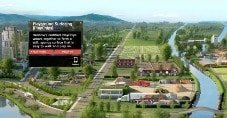Posts
https://www.denbow.com/wp-content/uploads/2024/06/Tomblog.jpg
427
342
Tanya Richards
https://www.denbow.com/wp-content/uploads/2023/05/Transparent-LOGO-Horizontal-300x96.jpg
Tanya Richards2024-06-28 10:26:382024-08-15 15:16:59Soil - Stormwater Management Tool
https://www.denbow.com/wp-content/uploads/2024/06/Tomblog.jpg
427
342
Tanya Richards
https://www.denbow.com/wp-content/uploads/2023/05/Transparent-LOGO-Horizontal-300x96.jpg
Tanya Richards2024-06-19 09:51:012024-08-15 15:26:19Soil Series - Who Is This Tom?
https://www.denbow.com/wp-content/uploads/2024/06/compostblog.png
194
290
Tanya Richards
https://www.denbow.com/wp-content/uploads/2023/05/Transparent-LOGO-Horizontal-300x96.jpg
Tanya Richards2024-06-13 15:47:552024-08-15 15:35:20Best Types of Compost for Landscaping: Ask Tom Series
https://www.denbow.com/wp-content/uploads/2017/06/soil-in-hand.jpg
400
600
Tanya Richards
https://www.denbow.com/wp-content/uploads/2023/05/Transparent-LOGO-Horizontal-300x96.jpg
Tanya Richards2024-06-12 14:12:042024-08-15 15:38:08BC - A River Delta: Understanding Soil: Ask Tom Series
https://www.denbow.com/wp-content/uploads/2017/11/Final-Compost-Photo-Ville-de-Mtl-493x300.jpg
300
493
Tanya Richards
https://www.denbow.com/wp-content/uploads/2023/05/Transparent-LOGO-Horizontal-300x96.jpg
Tanya Richards2024-06-10 12:57:572024-08-15 15:38:31Single Most Important Aspect of Soil - Ask Tom Series
https://www.denbow.com/wp-content/uploads/2024/06/asktomsoil.png
282
295
Tanya Richards
https://www.denbow.com/wp-content/uploads/2023/05/Transparent-LOGO-Horizontal-300x96.jpg
Tanya Richards2024-06-10 10:32:132024-08-15 15:38:58A New Soil Series Called "Ask Tom"
https://www.denbow.com/wp-content/uploads/2017/11/HOW-DOES-SOIL-HELP-WITH-STORM-WATER-MANAGEMENT.jpg
400
740
Tanya Richards
https://www.denbow.com/wp-content/uploads/2023/05/Transparent-LOGO-Horizontal-300x96.jpg
Tanya Richards2017-11-29 20:05:342024-04-04 15:08:25Soil - Stormwater Management Tool
https://www.denbow.com/wp-content/uploads/2017/11/soil-improvement.jpg
410
800
Tanya Richards
https://www.denbow.com/wp-content/uploads/2023/05/Transparent-LOGO-Horizontal-300x96.jpg
Tanya Richards2017-11-02 07:05:172024-04-04 15:08:57Soil Improvement: Why It Never Stops
https://www.denbow.com/wp-content/uploads/2017/07/why-structural-soil-is-so-good-for-trees..jpg
700
800
Tanya Richards
https://www.denbow.com/wp-content/uploads/2023/05/Transparent-LOGO-Horizontal-300x96.jpg
Tanya Richards2017-08-10 21:00:312024-04-04 15:09:27Structural Soil - Why is it So Effective? Ask Tom series
https://www.denbow.com/wp-content/uploads/2017/07/proper-soil-testing-methodolody-260x185-o.jpg
185
260
Tanya Richards
https://www.denbow.com/wp-content/uploads/2023/05/Transparent-LOGO-Horizontal-300x96.jpg
Tanya Richards2017-07-13 15:45:092024-04-04 15:10:17Proper Soil Testing Methodology - Ask Tom

